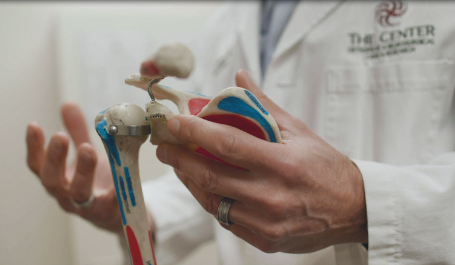
What is Shoulder impingement?
Shoulder impingement is a condition that occurs when the tendons of the rotator cuff muscles and the subacromial bursa (a fluid-filled sac) in the shoulder become pinched or compressed. The rotator cuff is a group of muscles and their tendons that surround the shoulder joint, providing stability and facilitating movement.
The space between the acromion (a bony projection of the shoulder blade) and the rotator cuff tendons is known as the subacromial space. When this space narrows, either due to inflammation, swelling, or structural changes, it can lead to compression of the tendons and bursa during certain shoulder movements. This compression can cause pain, inflammation, and sometimes damage to the rotator cuff tendons.
What causes shoulder impingement?
Shoulder impingement results from an imbalance of muscle strength between the rotator cuff and the deltoid muscle. Activities that involve repetitive use, like shoveling snow, can cause muscle imbalance because the rotator cuff musculature can fatigue faster than the deltoid muscle. Shoulder stability comes from the balance between muscle groups because the bones in the shoulder provide little stability to the shoulder joint. Impingement results when the musculature of the rotator cuff is relatively weak compared to the very strong powerful deltoid muscle which is the primary mover of the shoulder.
A lot of times people don’t notice that anything’s wrong with their shoulder until the next day, or the day following an activity. When the inflammatory process ramps up, a person will begin to experience arm pain, but most of the time people can’t identify any specific event that could have caused this pain.
Symptoms of shoulder impingement
Common symptoms of shoulder impingement include:
-
Pain: Pain is usually felt on the outer side of the shoulder, and it may extend down the arm.
-
Weakness: Weakness in the affected arm, particularly during overhead activities.
-
Limited Range of Motion: Difficulty in raising the arm or reaching overhead.
-
Pain at Night: Pain may be more pronounced at night, especially when lying on the affected side.
Treatment options for Shoulder impingement
The shoulder is so dependent on the balance between muscle groups that subtle alterations in movement or activity can result in impingement syndrome. “How we choose to treat impingement depends on where the individual is at on the spectrum of pathology for impingement. Without significant structural injury, non-operative treatment is the rule, which may include physical therapy, a stretching program, or steroid injections. Surgical options are considered when irreversible changes have occurred that non-operative treatments cannot fix,” states orthopedic shoulder specialist, Dr. Scott Jacobson. A rotator cuff tear, for example, oftentimes does not respond to non-operative treatment and commonly requires surgical treatment.
How to minimize the risk of impingement syndrome
“If I could encourage people to do any type of exercises to minimize the risk of impingement syndrome, it would be exercises to strengthen the rotator cuff,” says Jacobson. “It’s a lot easier to prevent the onset of impingement than it is to cure the problem once it starts hurting. If you can figure out a way to incorporate shoulder strengthening exercises into your regular activities, it’s very beneficial.”
Receive information on living a healthy and pain free life from our providers by joining our monthly newsletter. Click below to sign up!





